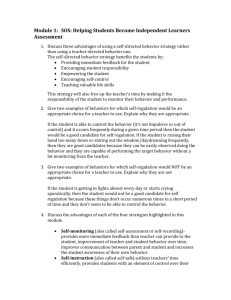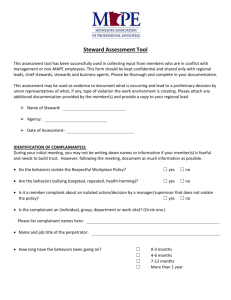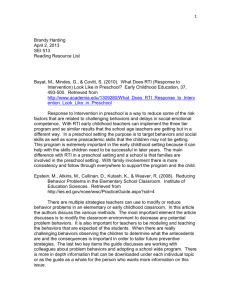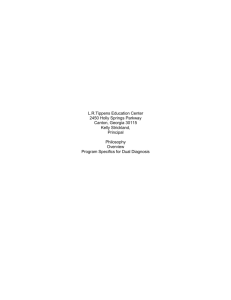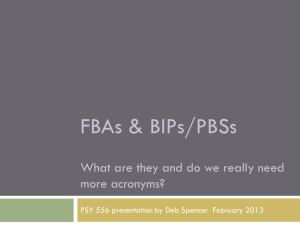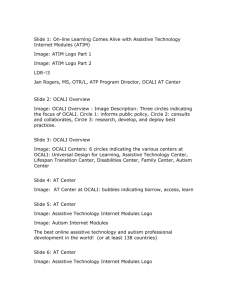- Ohio Center for Autism and Low Incidence
advertisement
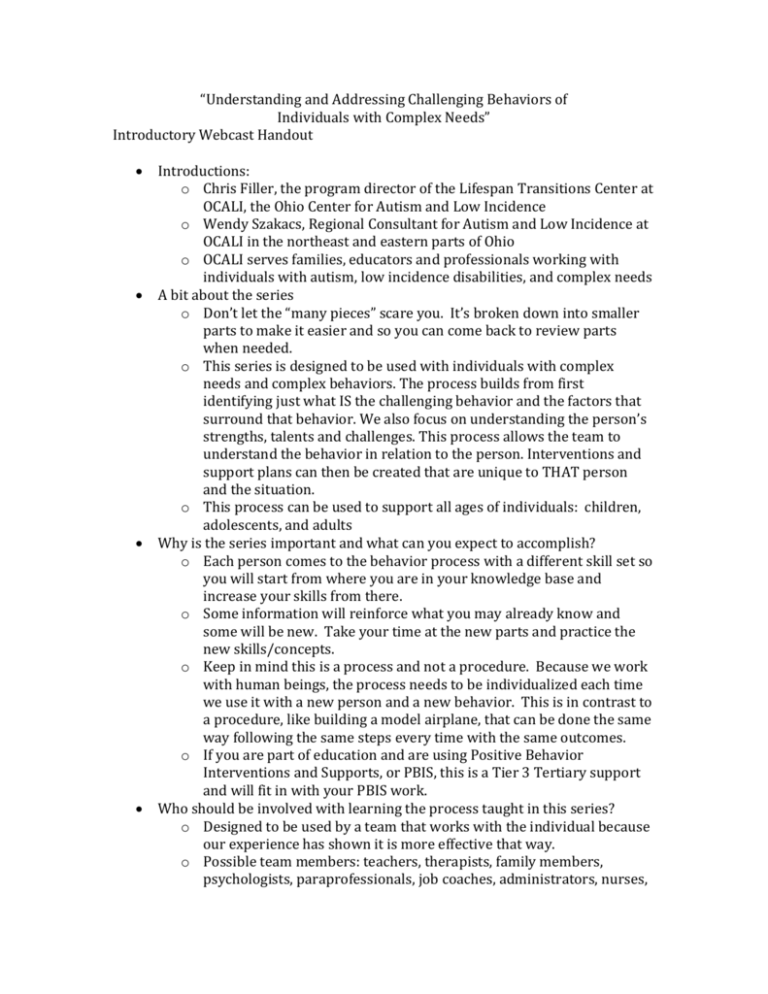
“Understanding and Addressing Challenging Behaviors of Individuals with Complex Needs” Introductory Webcast Handout Introductions: o Chris Filler, the program director of the Lifespan Transitions Center at OCALI, the Ohio Center for Autism and Low Incidence o Wendy Szakacs, Regional Consultant for Autism and Low Incidence at OCALI in the northeast and eastern parts of Ohio o OCALI serves families, educators and professionals working with individuals with autism, low incidence disabilities, and complex needs A bit about the series o Don’t let the “many pieces” scare you. It’s broken down into smaller parts to make it easier and so you can come back to review parts when needed. o This series is designed to be used with individuals with complex needs and complex behaviors. The process builds from first identifying just what IS the challenging behavior and the factors that surround that behavior. We also focus on understanding the person’s strengths, talents and challenges. This process allows the team to understand the behavior in relation to the person. Interventions and support plans can then be created that are unique to THAT person and the situation. o This process can be used to support all ages of individuals: children, adolescents, and adults Why is the series important and what can you expect to accomplish? o Each person comes to the behavior process with a different skill set so you will start from where you are in your knowledge base and increase your skills from there. o Some information will reinforce what you may already know and some will be new. Take your time at the new parts and practice the new skills/concepts. o Keep in mind this is a process and not a procedure. Because we work with human beings, the process needs to be individualized each time we use it with a new person and a new behavior. This is in contrast to a procedure, like building a model airplane, that can be done the same way following the same steps every time with the same outcomes. o If you are part of education and are using Positive Behavior Interventions and Supports, or PBIS, this is a Tier 3 Tertiary support and will fit in with your PBIS work. Who should be involved with learning the process taught in this series? o Designed to be used by a team that works with the individual because our experience has shown it is more effective that way. o Possible team members: teachers, therapists, family members, psychologists, paraprofessionals, job coaches, administrators, nurses, day care providers, basically anyone that can knows the person and the situation AND is willing to work through the process. o If this information is relatively new to the team, it may be very helpful to include a mentor or facilitator that is familiar with the process that can help the team work the process the first time. What is the belief system needed to help produce positive outcomes with this process? o As you start this process, you must believe that the person you are supporting deserves the right to learn new behaviors. You need to acknowledge that the person is using these concerning behaviors because they probably don’t know how to change those behaviors. o We need to teach those behaviors that are valued by our society and will allow people to participate in our communities. o We used to validate segregating people based on disability and behaviors. If “we” thought someone was unsafe, or unable to communicate, socialize, or act like “us”, we decided they needed to be somewhere else; somewhere away from the “regular” people. We now know that is not true. It’s not even legal. So we are OBLIGATED to help people learn new ways to act, react and interact. We must BELIEVE it can be done and it is the right things to do. o If your team is starting this process and still has doubts, you need to examine your belief system first. Otherwise, you will have limited success. It is that important. It is foundational. How do relationships impact this process? o This is so valuable. First, having your team on the same page and believing that the individual you are working with can learn and change. And then knowing it starts with a trusting, respectful relationship. o Many individuals with challenging behaviors have had difficult times and have experienced several different environments without success. Building a relationship based on trust and respect is key to this process working. o Never underestimate the relationship between the individuals and those that support him/her. That relationship can help change behaviors and increase achievement levels. o We believe this is so important that we have a whole webcast about disposition and beliefs developed by our colleague Shawna Benson, the Director of the Teaching Diverse Learners Center at OCALI How do I proceed with the series? o Take your time. Learn about one step at a time. o Go in order. Don’t skip a step, even if you think you don’t need it. Remember, it is a process. o Review steps if necessary to make sure you understand before moving on. Or you can come back later and review if you find you need a refresher. o Work the process. Don’t just watch it. Complete each step so that you are building a plan as you go along o You will be introduced to several forms and guidance documents. Try not to get overwhelmed with the paperwork. Although you will use all of it the first couple of times through the process, you may be able to weed out some of it and just use the final forms eventually. Or you might like some or all of them and keep using them. o And be patient. It gets easier and more natural the more you use the process.



